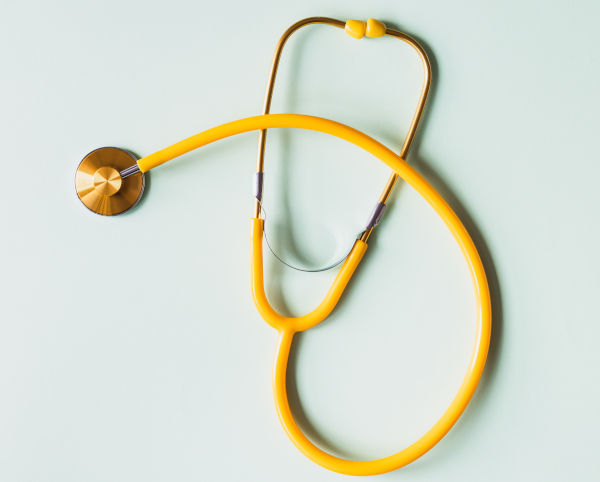
What is vulvodynia?

Symptoms of vulvodynia

What causes vulvodynia?

Diagnosis of vulvodynia

Treatment of vulvodynia

Who treats vulvodynia?

Videos on Vulvodynia

Additional resources
What is vulvodynia?
Back to topVulvodynia is pain in the vulva that lasts longer than 3 months and is considered a chronic pain condition. The vulva is the area surrounding the opening of the vagina, which is comprised of the outer and inner ‘lips’, the clitoris, the urinary opening (urethra), and the area towards the anus. Approximately 14 million are women have vulvodynia.
The inside of the vagina is composed of different tissue than the outside of the vagina. The outside of the vagina is composed of the same type tissue as the skin that is present on the thigh. However, the inside of the vagina is composed of composed of a special moist and soft ‘mucosal’ tissue, like the inside of the mouth. The opening of the vagina is unique in that it contains both types of tissue. Furthermore, underneath the skin of the vaginal opening and the vagina, there are many muscles that make up the vaginal opening and the vaginal canal. These muscles can expand and contract to open the vaginal entrance and relax the vaginal canal during activities such as intercourse, childbirth, sitting, standing, walking, urinating and having bowel movements. Sensation to the vagina is controlled by a collection of neurons (a nerve) called the pudendal nerve. This nerve starts in the lower portion of the spine (the sacral region) and then travels to the lower pelvis near the ‘sitting bones’ and eventually sends branches to the anus, rectum and vagina. The pudendal nerve is not only responsible for transmitting pain signals from the vagina, but also controls urination and defecation.
Symptoms of vulvodynia
Back to topIn general, women with vulvodynia may experience burning, sharp, raw, stinging or knife-like pain at the vaginal opening. Some can have pain all the time while others may only experience pain when the vulva is touched by clothing, a tampon or other activities such as intercourse or vaginal examination. It is important to note that each woman’s experience is unique, and symptoms can range from mild to incapacitating.
Additionally, pain can occur not only with light touch of the skin, but also during intercourse, sitting, standing, defecation or urination. Furthermore, in cases of severe muscle involvement, women can also experience urinary leakage, urgency, frequency or even constipation.
What causes vulvodynia?
Back to topVulvodynia results from a complex interaction between peripheral and central factors. Because the vagina is composed of skin, mucosa, nerves and muscles, pain that is felt in the vaginal area may originate from any of these structures. For example, the pain can start after a variety of acute peripheral problems including:
- Chronic inflammation or vaginal infections that do not respond to anti-microbial therapy
- An injury to the vaginal skin, muscles or nerves that transmit sensation from the vulva to the spinal cord and the brain
- Allergies or autoimmune conditions such as lichen sclerosus, lichen simplex chronicus and lichen planus
- Pelvic floor muscle spasm or hypertonicity (this is often the cause of pain during intercourse)
- Neurologic conditions such as pudendal neuralgia, post-herpetic neuralgia, or nerve compression
- Hormonal factors such as low estrogen levels
Researchers have recently discovered that more than 80% of women with chronic vulvar pain have vaginal muscle tenderness. They speculate this to be the reason why so many women with this type of pain experience pain during intercourse and why generally pelvic floor physical therapy is helpful for vulvodynia pain.
Research has determined that certain women with vulvodynia have an increased number and sensitivity of pain-sensing neurons in the vulva. Others found that repeated exposure to yeast infections can increase the risk of developing pain in the vulva. Genetic susceptibility to chronic inflammation and chronic pain has been identified in some women as well. However, these findings are limited to research settings and have not yet translated into any definitive screening tests or treatments.
Vulvodynia pain is also mediated by many central factors; symptoms can be worsened by psychological distress such as anxiety, depression, poor coping and relationship distress. About 20% of women with vulvodynia also have other chronic pain disorders such as Irritable bowel syndrome (IBS) or Bladder pain syndrome/interstitial cystitis (BPS/IC). Researchers think people who have multiple chronic pain conditions are more like to have significant nociplastic pain, or central sensitization, contributing to their symptoms.
Regardless of the cause, sometimes women with vulvodynia experience many features of peripheral and central sensitization such as: severe pain with light touch (hypersensitivity), pain in other parts of the body (thighs, back, headaches), fatigue, and problems with sleep and mood. This finding is common to many other chronic pain conditions because all pain in the body is eventually mediated by the spinal cord and the brain, regardless of the cause or where the pain starts.
Diagnosis of vulvodynia
Back to topAny clinician who is trained in examination of the genitalia can make the diagnosis. To identify both peripheral and central causes of pain, your health care provider likely will do what is called a biopsychosocial assessment, where you will be asked about various factors that influence your pain including your medical, surgical, psychological and social history. First, the specialist will take a very extensive history about medical conditions, surgeries, reproductive health, genital symptoms, quality of life, functionality, as well as mental and relationship health. Sometimes taking a full history may involve more than one visit with the healthcare provider. Some providers use screening questionnaires which can help make this process easier.
In general, the diagnosis will be made when the pain can be localized to the vulvar area, lasting longer than 3 months and thus not responsive to earlier interventions. It is important to note that there is no one definitive test that can diagnose vulvodynia. Instead, providers rely on first excluding obvious causes for pain that can be easily treated. The diagnosis is made when there is no obvious or easily treatable cause, in addition to a combination of symptoms that can include chronic pain, physical or emotional disability and sexual dysfunction.
The vulvodynia examination may involve lightly touching the vaginal skin with a cotton tipped applicator to identify pain sensitivity and a single-digit internal examination where the vaginal muscles are palpated to assess pain and function. If the single digit examination (or cotton tipped touch) is too painful, the provider may recommend bypassing the traditional speculum exam. Sometimes the examination involves collection of vaginal cultures, a pap smear and a urine screen. At other times, if the provider needs to better assess the internal pelvic organs, a pelvic ultrasound may be requested. Blood tests, hormonal tests and biopsies are rarely used since they have not been shown to help make the diagnosis of vulvodynia.
Treatment of vulvodynia
Back to topMany treatments are available to manage specific causes of vulvodynia. For example, antifungals can be used to treat pain that is due to chronic yeast infections, steroids are used for pain that comes from vaginal skin disorders such as lichen sclerosus. However, regardless of the original cause of the pain, there are additional ways of controlling pain, ranging from less invasive, such as medications, physical therapies, psychological therapies, nutritional changes, anesthetic injections and nerve blocks, to more invasive methods like spinal cord stimulators and surgery.
It is essential to identify ALL factors that play a role in your pain and, with the help of your provider, develop a comprehensive treatment plan that goes beyond medications. Related conditions, such as sleep disturbances, fatigue, cognitive difficulty and mood disorders, should also be treated.
Everyone is unique and responds differently to treatments, but usually a combination of drug and non-drug treatments is most effective in reducing the severity of pain and improving quality of life. This is called multi-modal or interdisciplinary therapy. This type of whole-health approach to pain management requires careful discussion with your health care provider and sometimes, it also requires input from multiple other specialists other than gynecology, such as gastroenterology, urology, physical therapy, pain management and mental health. It can take some time and trial-and-error to find treatments that work best for you without producing intolerable side effects. Nonetheless, a biopsychosocial approach, combined with integrative mind-body therapies from more than one clinical discipline, and through shared-decision making between you and your provider, has been proven to reduce pain severity, increase function and improve overall quality of life.
Therapies for vulvodynia include education and life-style modification, physical therapy, topical anesthetics, tri-cyclic antidepressants, oral or topical hormonal treatments, oral anti-inflammatory agents, intramuscular Botox, trigger point injections, anesthetic blocks, physical therapy, cognitive behavioral therapy, and surgery.
We have organized treatment strategies into options you do on your own (self-care) and options you can consider in collaboration with your health care provider (professional care).
Self-Care
There are many behavior or lifestyle strategies that can help to improve the symptoms of vulvodynia. Below are several behavioral strategies that are often helpful for many people with vulvodynia:
- Eliminating over-the-counter feminine products, such as perfumed bubble baths, soaps, sprays and douches, that can irritate vulvar tissue.
- Eliminating certain foods if you notice they increase your pain and that eliminating them relieves pain. For example, some women are sensitive to acidic or high-sugar foods. If you want to test for food sensitivity, eliminate one item or food group at a time to determine which one, if any, affects you.
- If you have a lot of vaginal irritation or burning discharge, change your clothing and laundry. Wear all-white cotton underwear, skirts or loose-fitting pants and thigh-high or knee-high hose instead of pantyhose. Remove wet bathing suits and exercise clothing promptly. Use dermatologically-approved detergent for sensitive skin. Double-rinse your underwear and other clothing that touches the vulva. Do not use fabric softener on undergarments and use soft, white, unscented toilet paper.
- Wash the vulva with cool to lukewarm water only. Avoid over-washing the vagina - once a day is enough to maintain vaginal health.
- During intercourse, use a water-soluble lubricant that does not contain propylene glycol. Do not use contraceptive creams or spermicides. Ask your provider about trying a topical anesthetic, such as lidocaine, to be applied 5 to 10 minutes before intercourse. Wrap ice or a frozen gel pack in a thin towel and apply for 10 to 15 minutes after intercourse. Urinate and rinse the vulva with cool water after intercourse.
- Avoid exercises that put direct pressure or excessive friction on the vulva, such as bike riding. But is it important to exercise regularly since prolonged inactivity may worsen pain. Stretching and relaxation exercises throughout the day can help even when you are not exercising. Research shows that aerobic exercise boosts the body’s natural painkillers and enhances mood. Best practice is to “start low and go slow.” In other words, start with a 10-minute walk and gradually increase the duration, frequency and intensity over weeks to months. Link to Physical activity and exercise
- If you sit a lot at work all day, make sure to periodically stand and try using a specialized cushion or gel foam donut for long periods of sitting.
- Focus on a healthy lifestyle which should include a nutritious diet, adequate sleep and daily exercise are critical for people with chronic pain. Eat a balanced diet with lots of vegetables and fruits, limit simple carbohydrates and unhealthy fats, and drink six to eight full glasses of water daily. Since sleep, mood and pain are closely linked, it’s important to get enough restorative sleep. If you’re not sleeping seven or eight hours each night, or have difficulty falling asleep because of pain, talk to your provider. Link to Sleep
- Everyday stress may also worsen pain, but you can learn to control it with meditation or relaxation techniques, such as deep breathing and yoga. Mindfulness-based stress reduction uses a combination of mindfulness meditation, body awareness and yoga, and research shows that it can help to reduce stress, and improve quality of life, which can help reduce impact of chronic pain. Link to Relaxation and Mindfulness
- It is not unusual to feel sad, angry, or anxious about the negative impact of vulvodynia has on your quality of life, but try to not let negative emotions overwhelm you. In the beginning, it is common for women with vulvodynia to feel that the pain has taken over their life. To overcome feeling helpless and regain control, accept your pain and understand that although there is no quick, one-fix cure, you cannot let your physical limitations define you or keep you from participating in your life. Focus on your strengths and other positive things that you can do, instead of dwelling on what you cannot do. Maintaining a positive attitude takes patience and practice, but it makes a difference in your recovery. Negative thoughts such as rumination (focusing attention on your symptoms), catastrophizing (always imagining the worse situation) can cause anxiety, depression and promote inactivity, which can intensify pain. Maintaining a positive attitude takes the focus off your pain and keeps anxiety in check, which helps you feel better both emotionally and physically. Substitute negative thoughts such as, “I’m never going to feel better,” with “I’m going to do everything I can to feel better.” Sometimes women find it helpful to discuss their feeling with a friend, family member, or therapist. Journaling, keeping a dairy of times when you feel good, finding a hobby and exercising are all ways of staying positive. In general, it is most helpful to combine self-help strategies and psychological therapy in order to achieve the best results. Link to Cognitive and Behavioral Strategies
- You are an important member of your health care team so actively participate in your care. Educate yourself about your condition and don’t hesitate to ask questions. Make sure all your providers communicate with you and with each other. Work with your provider to achieve your goals. Link to Communication
Professional Care
Pelvic floor physical therapy - The majority of women with vulvodynia have pelvic floor muscle weakness or spasm that results significant pain, fear and avoidance of genital contact such as light touch, intercourse or pelvic examination. Pelvic floor physical therapy has been shown to be the most effective intervention for decreasing pain and improving function in women with vulvodynia.
This type of physical therapy is usually performed by a specialty trained physical therapist, in a private setting. The therapist assesses the joints, muscles and nerves of the pelvis and vulva to identify all components that contribute to the pain and to tailor treatments which may include exercises and manual therapies, such as massage, soft tissue work and joint mobilization. Sometimes therapists use ultrasound, electrical, or cold/heat stimulation that can be applied with of vaginal sensors or biofeedback machine. The machine provides feedback during therapy sessions on the strength and relaxation of pelvic floor muscles. This helps patients visualize when the exercise is being done correctly and when pelvic floor function returns to normal. Therapy may also involve the use of vaginal dilators and lubricants. Generally, physical therapy involves once-a-week sessions over 2-3 months before pain and function begin to improve.
Psychological therapies can be extremely helpful for management of chronic pain and vulvodynia. Besides helping with problems like anxiety and depression, psychologists can help find many other factors that can worsen pain, as well as pain’s impact on other areas of your life, such as sleep, mood, appetite, relationships, work, and finances. Your emotional suffering and how you respond to chronic pain play a major role in how well you are able to cope. There are many types of psychological therapies including Cognitive Behavioral Therapy (CBT), and Acceptance and Commitment Therapy (ACT); both target negative thoughts, feelings and behaviors that have been shown to worsen pain and propagate the chronicity of pain. Link to Guided Therapy
Medications used to treat vulvodynia generally fall into 5 categories: 1) pain relivers 2) mood stabilizers with pain relieving properties, 3) anti-seizure medications with pain relieving properties, 4) muscle relaxants and 5) hormones.
Pain relief medications can come in various forms including pills and topical creams/ointment. The most commonly prescribed cream/ointment for vulvodynia is Lidocaine. This is an anesthetic compound that can be applied to the vaginal entrance daily to provide temporary pain relief. Research shows that Lidocaine can provide short-term relief (15-20 minutes) and is most useful when used prior to contact such as intercourse, tampon insertion or insertion of vaginal dilators. Pain relievers such as acetaminophen, ibuprofen or even opioids have not been shown to provide effective pain relief in vulvodynia (although they are useful for pain in other parts of the body). Opioids especially, are not recommended for chronic use because they are linked to significant long-term side effects such as changes in mood, insomnia, anxiety, constipation and opioid induced sensitization, a phenomenon where a person feels higher levels of pain after prolonged opioid use.
Mood stabilizers, such as Tricyclic antidepressants (TCA) and Serotonin Norepinephrine Reuptake Inhibitors (SNRIs) provide minimal pain relief and are effective in treating other symptoms such as depression, anxiety and sleep deprivation. Research shows that when these symptoms are present along with vulvodynia, these types of medications can help improve quality of life which in turn may help with pain relief.
Anti-seizure medications, such as gabapentin and pregabalin, are well studied in neuropathic pain and fibromyalgia. However, studies have shown that they are not effective for the treatment of vulvodynia, therefore, they are only recommended in cases where neuropathic pain or fibromyalgia co-exist with vulvodynia.
Muscle relaxants - Only one muscle relaxant, Diazepam, has been studied in vulvodynia. It can be prescribed as an oral pill which is placed in the vagina or vaginal suppository. Diazepam helps with muscle relaxation and anxiety symptoms. Research shows that diazepam can provide minimal pain relief especially when combined with physical therapy and electrical stimulation. Additionally, oral pills may cause less side effects and be more effective than vaginal suppositories.
Topical hormonal creams containing estrogen or DHEAS, may improve the health of vulvar tissue and reduce pain and dryness, especially in women who are in menopause. Although testosterone may play a role in women’s sexual health, testosterone cream (sometimes it is also combined with estrogen) has not yet been shown to be effective in vulvodynia.
All the above-mentioned medications are sometimes compounded, by providers and pharmacists, into combination creams, ointments or suppositories that can be applied through the vagina. Compounded formulations may vary from single compounds, such as diazepam, to formulations containing multiple compounds (e.g. lidocaine anesthetic, gabapentin and estrogen). It is important to note that compounded formulations have not been extensively studied, nor shown to be effective in the treatment of vulvodynia. Trial and error is the only way to figure out if this type of therapy can be helpful. Furthermore, compounded products can be expensive, are not usually covered by insurance and sometimes can cause significant skin irritation and rarely abnormal bleeding. They should be used with great care, and although they are compounded by pharmacists, they should not be used without supervision of a physician.
Surgery and procedures – Vulvodynia is rarely treated with surgery or procedures, but there are some circumstances where these methods are appropriate. Your health care provider can review these options in more detail and determine whether they may be beneficial in your case.
- Botulinum toxin A injections and other types of trigger point injections may provide temporary pain relief in cases where vulvodynia is associated with pelvic floor muscle spasm and can be coupled with pelvic floor physical therapy.
- In cases of severe pain, anesthetic injections that block the nerves that provide sensation to the vagina (pudendal nerve) can also give temporary pain relief.
- Surgical excision of the painful tissue, also known as a vestibulectomy, can be effective but only in women who have pain focused over a very specific part of the vaginal entrance known as the vestibule and only if they failed other less invasive therapies.
- Spinal cord stimulators (SCSs) use electric current to help ease pain. Most require a minor surgical procedure to implant the stimulator. Currently, SCSs are FDA approved only for the management of chronic low back pain and should be used in cases where less invasive measures, such as physical therapy, failed to relieve the pain.
In summary, based on available research, the following summary recommendations can be made:
- Physical therapy and psychological therapies such as cognitive behavioral therapy and sexual therapy should be considered as first line interventions as they have been shown to be the most effective in improving pain, quality of life and sexual function
- Tricyclic antidepressants are not recommended for management of vulvodynia alone, although TCAs are recommended for the management of pain in patients with centralized pain symptoms such as anxiety, depression and insomnia
- Topical corticosteroids are not recommended
- Lidocaine ointment is not recommended for long-term use although it may be beneficial for short-term use
- There is not enough evidence to recommend anti-inflammatory agents, anticonvulsants, hormonal treatments, Capsaicin, botulinum toxin A, as first-line treatments.
Who treats vulvodynia?
Back to topVulvodynia is usually treated by primary care physicians or gynecologists. Optimal care of vulvodynia often requires a team approach. This team might include the following specialists:
- Primary care physicians (PCP) – PCPs may include Family Medicine physicians, Internal Medicine physicians, or Pediatrician physicians. A PCP is a physician who specializes in general medical care and typically develops long-term medical relationships with patients over the course of many years. PCPs can initiate evaluation and treatment for vulvodynia and help to coordinate referrals to other specialist providers, such as OBGYNs or physical therapists, when needed.
- Gynecologists – Obstetrician-gynecologists (OBGYN) are physicians who specialize in women’s health, with a focus on conditions that affect the female reproductive system (uterus, ovaries, fallopian tubes).
- Advanced practice providers (nurse practitioners, physician assistants) who specialize in reproductive health conditions and often work with PCPs or OBGYNs can help coordinate the long-term care of women with vulvodynia.
- Nurse educators – specialists who can educate about these conditions and help develop or refine a personalized treatment plans.
- Pelvic Health Physical Therapists- physical therapists who specialize in the evaluation and treatment of abdominal and pelvic musculoskeletal disorders, including chronic abdominal and pelvic pain.
- Integrative health practitioners - specialists who use mindfulness and other positive behavioral approaches to improve endometriosis symptoms, promote healing, and improve functional status and overall well-being.

